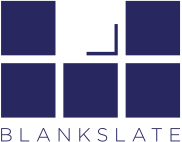One of the largest struggles our clients have had this year to date is hiring in a candidate driven market.
Last year the Business Development Bank of Canada (BDC), WorkBC, and the Vancouver Economic Commission (VEC) all determined that we are currently in the midst of a labour shortage making hiring in Vancouver harder than other competitive cities. The VEC anticipates a 1 million person deficit in tech talent in BC over the next 10 years – this means is we’re currently in what is known as a “candidate driven market.”
39% of of small and medium sized businesses are already having difficulty finding new workers.
Now more than ever, employers are all fighting over hiring the same active candidates and all reaching out to the same passive candidates. So how can you get ahead of the curve on hiring? To remain competitive in the fight for talent, having a strong HR strategy is needed in order to shift to a candidate market and retain your top talent.
When designing your 2019 HR strategy your process should focus on two elements;
- Workforce Planning (Who you will need to Hire, when and where), and;
- Employee Value Proposition
Workforce Planning
A company is only as successful as its people. Have a people strategy in place that is aligned with your business strategy. Workforce planning is the process that aligns these two strategies.
The first step when initiating your company’s workforce planning is to recall your 1 year, 3 and 5 year goals to establish your 12 month business strategy. What do you need to achieve over the next year to ensure you are on the right trajectory for your longer term goals? Will this years focus be on increasing sales, product development or entering a new market? Once you have established your 12 month business strategy you can start creating your people strategy; who you need to get you there, and when you need them.
Ask your senior leadership team (SLT);
- What specific skill sets do we need to accomplish our goals?
- Can we promote from within?
- Can we afford them and how are we going to budget?
- Do we need them full time? What are the additional costs of an employee?
- Do we need employees or contractors or does it make sense to outsource to an agency?
- Should we look at immigrating talent from the global workforce?
Having this conversation gives your SLT an understanding on whether they have or need to hire the workforce needed to execute the business strategy. It is also essential to involve your HR team or recruiter (if you have one) and arm them with this knowledge so that they can assist in reorganizing existing or Hiring/ deploying new talent to deliver on the business objectives. They will make sure the right people are on the right bus, in the right seats, going in the right direction.
Employee Value Proposition
Having clearly defined vision and values is essential to attracting and retaining talent. Your values are more than just four words on a wall. They provide the foundation for the way your organization works and the why behind it. Your values should be foundational to each component of your HR practices. Beginning with attracting and hiring top talent and your hiring/ recruitment process. Your employer brand is your organization’s reputation as an employer and your values should feed directly into this. Why would a talented person choose to come work for your company? This should be clear on your careers page, in your job posting, during the interview process right up to onboarding and then continued through your employees employment journey.
Your employee value proposition should be clear to your existing workforce. Be transparent and regularly share your vision, values and goals with your team. Of the employee happiness surveys conducted by BLANKSLATE for our clients, 90% of respondents felt it is important to have a clear understanding of their companies vision, values and goals. What are the reasons people should be proud and motivated to work for your company? Or in other words; why should they stay if presented with another opportunity?
WIIFM
Our recruiters at BLANKSLATE often coach our clients to be able to verbalize and describe the “WIIFM” statement. (This is the “What’s in it for me” comment) and the one thing that could make a difference to a passive candidate who might not be looking to move. LinkedIn states over 70% of the global workforce is made up of passive talent who aren’t actively job searching. These passive candidates are getting tapped on the shoulder and presented with new opportunities everyday. Hiring is more expensive than retaining good talent. Communicating and living your clearly defined vision and values is a low cost and effective strategy to retaining your top talent.
By being able to openly communicate your Employee Value Proposition AND describe your 1/3/5 year plan – you will effectively be able to explain to potential new hires why they might want to come and join you and WIIFM.

